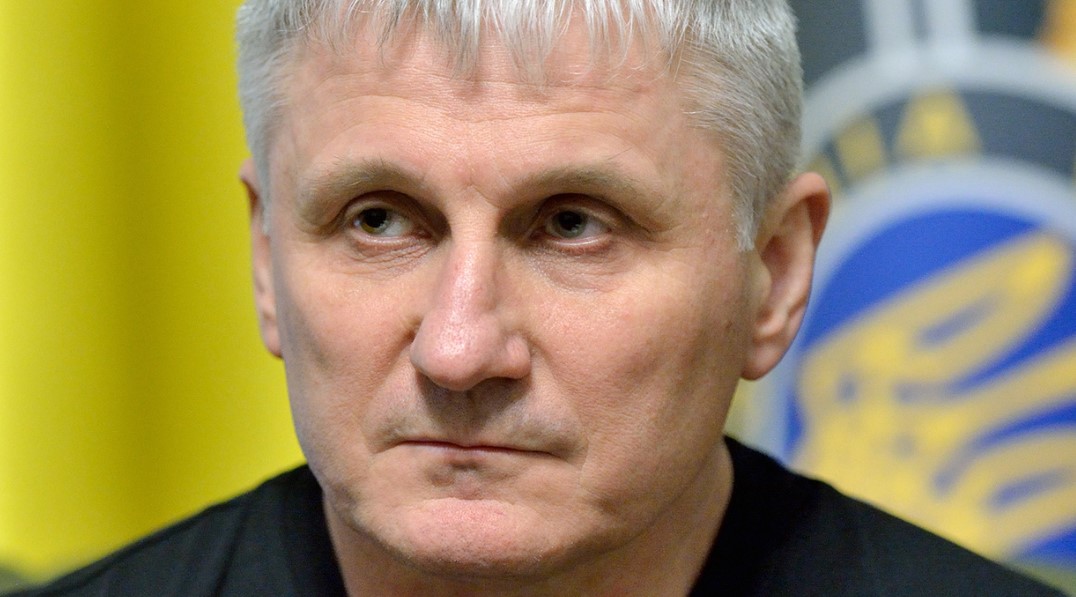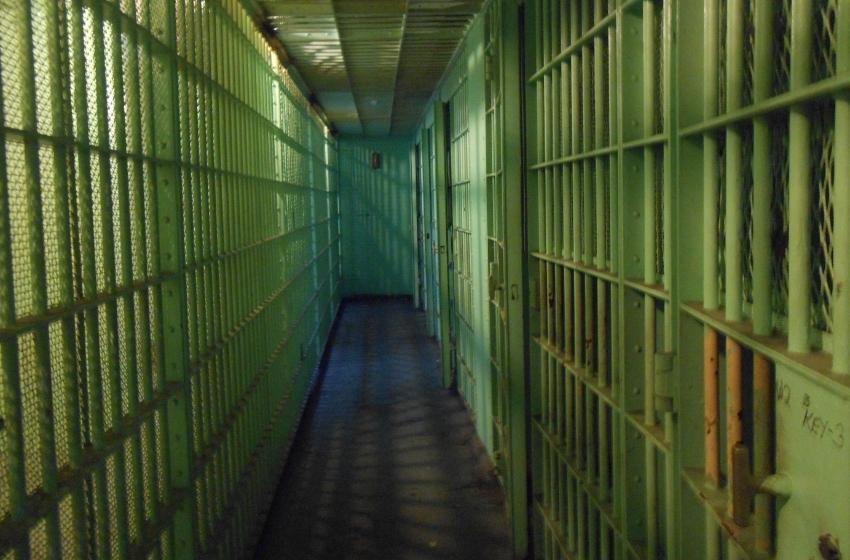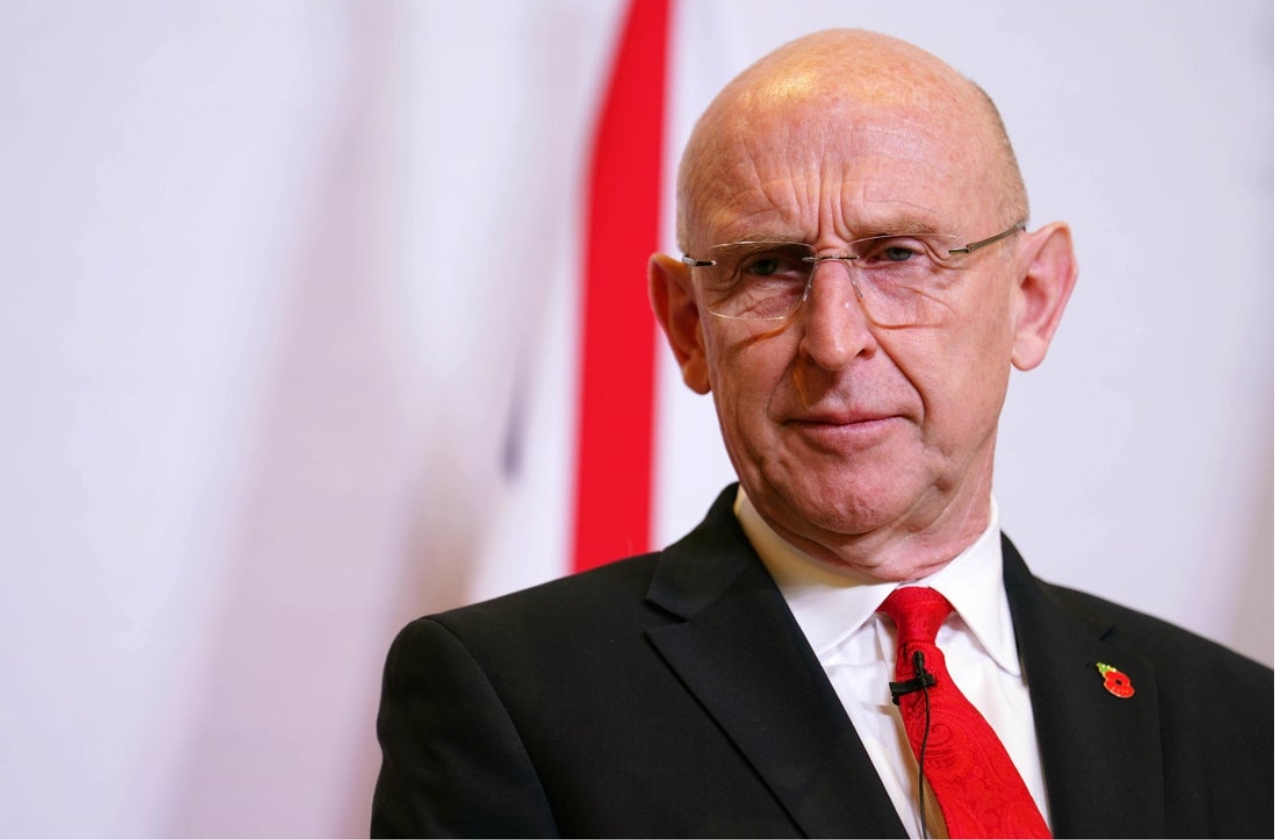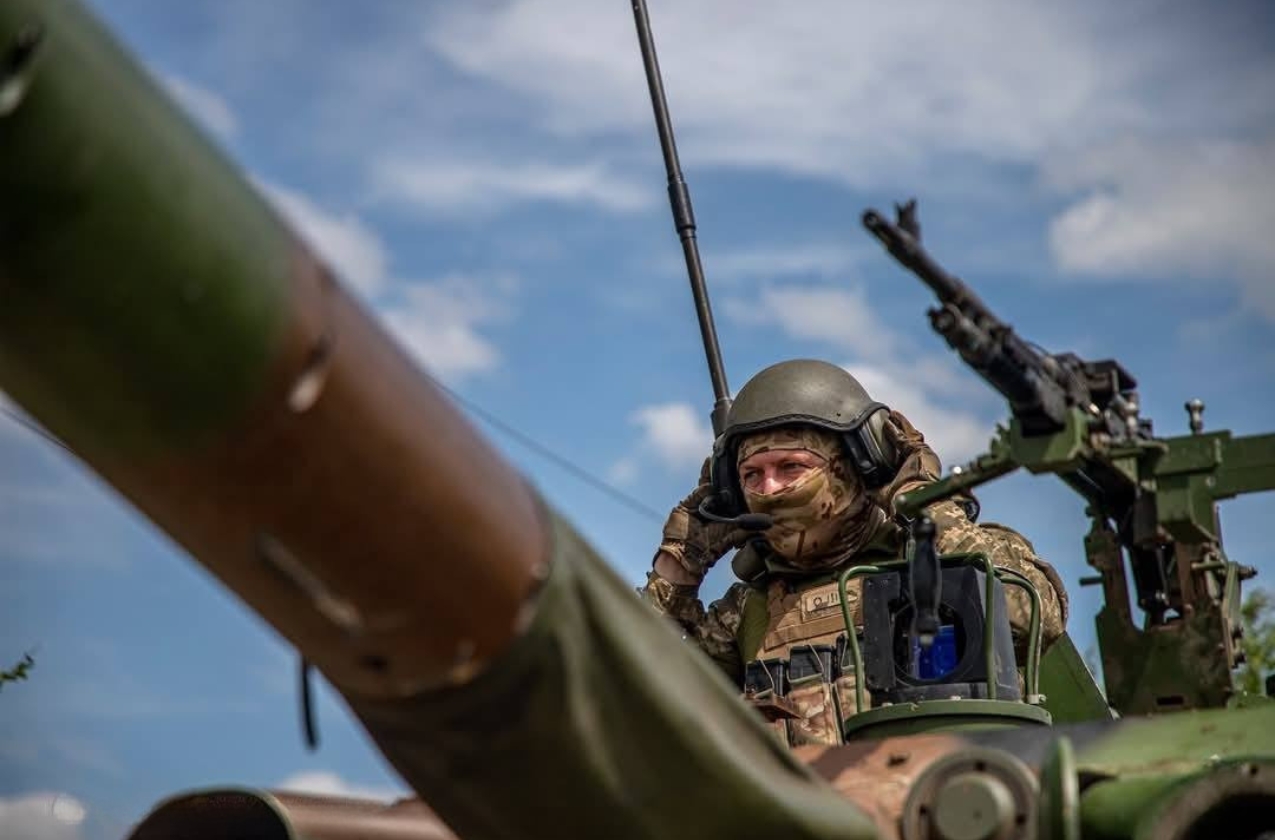Traditionally, the Foreign Intelligence Service is considered political-economic intelligence, and its main task is to inform the top officials of the state about the intentions of foreign policy players. Currently, the priority for intelligence officers is Russia and its allies. In March last year, the President appointed career military intelligence officer Oleh Ivashchenko as head of the Foreign Intelligence Service of Ukraine. He has significant combat experience and went through a long path in the Main Directorate of Intelligence of the Ministry of Defense. He served in an elite special forces officer unit, known as Unit 2245, and took part in special operations that are still classified.
For the past nine years before his appointment to the Foreign Intelligence Service, Ivashchenko worked as the first deputy chief of the Main Directorate of Intelligence. At the same time, he was deputy chief of the General Staff of the Armed Forces of Ukraine for intelligence, and then assistant to the Commander-in-Chief of the Armed Forces of Ukraine also on intelligence matters.
“In the General Staff, every day I reported intelligence information to the Chief of the General Staff and the Minister of Defense, participated in developing assessments of probable threats in planning the defense of the state,” Ivashchenko said about this period of his career.
In his first interview since the start of the full-scale invasion, the head of the Foreign Intelligence Service told Ukrinform about Russia’s strategic plans regarding Ukraine, its economic and military potential, mobilization resources, and in detail — about the assistance in the war from allied states — North Korea, Belarus, and China.
Besides this, Ivashchenko answered questions about whether Russia is preparing to attack NATO countries, about the Russian PMC (private military company) in Africa, and a new system for training intelligence officers.
RUSSIA WANTS TO BUY TIME TO REGROUP
— Oleh Ivanovych, recently there have been more and more public statements expressing a desire for peace. Does the Foreign Intelligence Service of Ukraine have any information about the Kremlin’s intentions regarding a ceasefire?
— Russia’s strategic plans regarding Ukraine remain unchanged — to gain full control over our territory. But desire does not equal capability. They are exhausted — technologically, economically, and diplomatically. Overall, Russia’s long-term goal is to establish control over the countries of the former Soviet Union.
— What are their plans on the battlefield?
— The entire Ukrainian intelligence community agrees there’s nothing new. Their goal is to take full control over Luhansk, Donetsk, Zaporizhzhia, and Kherson regions.
However, they cannot fully implement this plan. Claims about “pushing out” our forces from border areas are not true. On the contrary, we control a number of positions inside Russian territory, including in the Kursk and Belgorod regions.
They also want to create a so-called security zone in the territories of Kharkiv, Sumy, and Chernihiv regions. But they no longer have the resources. Whereas earlier they dreamed of going 30 kilometers deep, now it’s only 5 to 10 km.
— So, from what you’re saying, can we conclude that these four Ukrainian regions represent the minimum territory after which Russia would be willing to enter peace negotiations?
— Their logic is simple: they want to buy time to regroup. But no one can guarantee this will mean peace. It will be another stage in preparing for a new strike. They are negotiating because they are tired. They lack people, equipment, and time.
We, on the other hand, want sustainable peace. The President, all Ukrainian authorities, and security agencies are working to increase pressure — imposing additional sanctions, restrictions on oil and gas. Because every one of their tanks is a dollar earned somewhere else. For us, it is clear that Ukraine was and will remain within the lands defined in our Constitution and recognized by international law. This is not up for discussion.
— Let’s talk about Russia’s war capabilities. First of all, how does the Foreign Intelligence Service of Ukraine assess the state of the Russian economy?
— Russia’s military overspending has reached 5 billion dollars in just the first three months of this year.
— Before the full-scale invasion in 2022, Russia’s National Wealth Fund was about 150 billion dollars. Now, only around 38 billion dollars remain. The money is melting away. Their other reserves — securities — are illiquid. As of today, they cannot be sold.
They had 2,300 tons of gold — now only 1,700 tons remain. They are selling it. There were 164 billion Chinese yuan in reserves, which are also gradually shrinking. Overall, Russia’s military overspending in the first three months of this year amounts to 5 billion dollars. For their economy, these are quite serious issues.
— How long will Russia be able to finance the war?
— By the end of this year, we expect serious problems in the Russian economy, including financial and labor resource shortages. A crisis in energy, public utilities, and a shortage of personnel could become noticeable.
— How will this affect the Russian population?
— It is already affecting them. Today, in the Russian Federation, anyone who wants to earn money joins the army. They sign a contract and receive between 30 to 40 thousand dollars depending on the region. The state, local authorities, and businesses pay the recruits. There is encouragement to enlist.
Since the start of the full-scale war, Russia has mobilized 1.3 million people, with almost a million losses due to killed and wounded.
At first glance, this scheme seems attractive to Russians, but it turns out to be costly for Russia. According to our data, the Kremlin tries to avoid payments, and debts are growing.
By the way, this is how foreigners end up in the army. They are told: you’ll get citizenship, money, and other benefits.
Local authorities understand their labor shortages and prefer to bring in foreigners, who are numerous, just to tick the box that their region met its plan. This way, they keep their local workers at their enterprises.
— Does intelligence have data on Russia’s population and mobilization resources?
— Russia’s population is about 145 million. The mobilization resource is 25 million — those who have the relevant military registration or related specialties. These are the labor resources that drive the economy. But realistically prepared soldiers number about 3 million. Since the start of the full-scale war, 1.3 million have been mobilized, and nearly a million have been lost as killed or wounded.
— How are they doing with arms production?
— Only 20% of Russian equipment is modern systems.
— They are trying to reach maximum production, but it’s difficult. They need investments, machinery, components, and there are problems with all that. Electronics and special chemicals are particularly challenging.
Currently, 80% of their military equipment is old, with reduced capabilities. It has been taken from storage, repaired, and sent to the front. Only 20% of Russian equipment consists of modern systems.
If we look at ammunition, they produce about 3 million shells annually of 122 mm and 152 mm calibers. They also obtain another 2.5 to 3 million from North Korea. Since the start of the war, they have received 6 million shells from there. North Korea has also supplied 170 mm self-propelled artillery guns M1989 Koksan and 240 mm M1991 multiple launch rocket systems — 120 units of each type.
— How do the Russians pay North Korea?
— They provide them with missile and space technologies. We do not rule out that these could also include technologies related to nuclear weapons or their improvement.
We know that North Korea has started sending specialists with relevant education to Russia’s military-industrial complex enterprises, particularly in aircraft manufacturing.
North Korea also supplies labor for agriculture, house building, and road construction. Last year, Pyongyang sent 13,800 workers to Russia.
— Are North Koreans directly participating in combat on Ukrainian territory?
— They are present in the Kursk region. We have not recorded them on the occupied territories of Ukraine, but their artillery has already appeared in the Kherson and other directions.
— In April, the president reported that 155 Chinese nationals were involved in the war against Ukraine and added that there could be more. Two of them were captured and claimed they decided independently to participate in the war. Is it true that China did not authorize its citizens’ participation? Does intelligence have data showing that Chinese, like North Koreans, are learning from Russians about modern warfare?
— In every country, special services handle certain tasks, so we cannot rule out that some of those representatives were learning about modern warfare.
We know the Russians share experience with the Chinese. At the level of military cooperation, staffs, and planning, joint military exercises take place. Chinese are also invited to joint Russian-Belarusian exercises held in training grounds in Belarus and Russia. During these international military cooperation events, experience exchange happens.
There are many Chinese in Russia, as well as other nationalities, including from Central Asia. Overall, around 6 million foreigners temporarily reside in Russia. These are people who came seeking work, as well as students from Asian and African countries. They, like any foreigner in Russia, could end up in the ranks of the Russian Armed Forces due to minor administrative violations or for financial incentives — we do not rule this out.
— In mid-April, the president said intelligence has data on China supplying artillery and gunpowder to Russia. He also said that Chinese representatives “are involved in manufacturing some weapons” on Russian territory. Do we know what kind of manufacturing this is?
— Yes, there is information that China supplies machinery, special chemicals, gunpowder, and components specifically to military enterprises. We have confirmed data on 20 Russian factories. In 2024–2025, at least five cases of aviation cooperation with China were recorded — equipment, spare parts, documentation. Six cases involved large deliveries of special chemicals.
By early 2025, 80% of critical electronics for Russian drones are of Chinese origin. There are substitutions, deception in labeling, and shell companies through which all necessary microelectronics production materials are routed.
THE BELARUSIAN ARMY IS INCAPABLE OF LARGE-SCALE COMBAT OPERATIONS
— Is there any reason to believe that the planned military exercises in Belarus this autumn, involving Russia, could escalate into a new offensive from the north?
— We have all the necessary information about these exercises. Russia has already sent out about 40 invitations to military representatives from other countries. They want to turn this into an international event.
According to the exercise plan, an operational scenario will play out involving confrontation between two coalitions of states. One is led by Russia, the other is a hypothetical West. It’s clear who they mean — those countries that are currently supporting Ukraine, our European partners.
— There are many speculations that Russia, under the cover of these military exercises, might attack the Suwałki Corridor or the Baltic states or Poland. How realistic is this?
— I remember 2015. At that time, I was appointed the First Deputy Chief of the Main Intelligence Directorate (Deputy Chief of the General Staff). Since then, literally every joint Russia-Belarus exercise has included the scenario of establishing control over the Suwałki Corridor. This is not fantasy, but part of their strategic scenarios.
They always consider the possibility that Kaliningrad is threatened, that NATO might take control of the region, or that some “color revolution” might happen in Belarus. Then Russia “comes to help” and sends in troops. That’s the scenario. For this, they prepared the 1st Tank Army and the 20th Combined Arms Army. According to the plan, these troops move through the Suwałki Corridor toward Kaliningrad. Undoubtedly, this poses a direct threat to the Baltic countries.
— What is the situation in Belarus? Should we expect a threat from that side?
— At present, the Belarusian army is not capable of large-scale combat operations. Everything they keep near our border amounts to about two thousand servicemen — only to distract us.
In other words, their combat forces are small, and before the war they were unable to conduct offensive operations, and morally their servicemen are not ready for this.
Many Belarusian commanders were educated in Russia. As early as 2022, they pressured Lukashenko to join the war. But the Belarusians themselves — both military and civilians — do not want this. Also, keep in mind that today Belarus’s economy is completely dependent on the Russian Federation.
When Russia, which planned to end the war “in three days,” ran into problems with armaments in 2022, Belarus transferred everything it could from its warehouses: ammunition, equipment — T-72 tanks, BMP-2 infantry fighting vehicles, sights, body armor, helmets, machines. Now they have also started producing ammunition that Russia lacks. Rockets, shells — everything needed for war. The Belarusian military-industrial complex has become an extension of the Russian one. About 80% of Belarusian defense enterprises are integrated into the Russian defense industry. It is effectively a single base.
— Has Belarus received nuclear weapons from Russia?
— They have delivery systems. That is true. There are aircraft and the Iskander missile systems. But there are no nuclear weapons in Belarus itself. That’s a fact.
— So they have carriers, but no warheads?
— Exactly. No warheads. They are setting up storage sites, preparing, building. Lukashenko says that by the end of the year they will have “Oreshnik” [a storage facility]. But this seems to be wishful thinking. For now — nothing like that exists, and it’s unlikely to appear.
— During the previous presidential elections in Belarus, there was a protest movement. What is the current public mood there?
— Lukashenko is holding on, controlling the situation solely through the work of security services and by intimidating people. The opposition is either repressed or abroad. This is the reality of Belarus, which unfortunately has not changed.
POLAND, THE BALTIC STATES, AND NORTHERN EUROPE ARE IN THE RISK ZONE
— How is the cooperation between the Foreign Intelligence Service of Ukraine and leading intelligence agencies? Have there been contacts after the change of leadership in Washington — with the intelligence community and in general?
— We have good working relations with many heads of leading intelligence agencies, including those of the United States. We communicate and solve joint tasks in the interests of our states.
They provide support in terms of intelligence and help on various issues related to armaments and supplying our Defense Forces.
— Does Foreign Intelligence Service conduct joint special operations with foreign intelligence agencies?
— No one will answer that question directly, but if there’s a questionnaire with a checkbox, consider that I’ve checked it (smiles).
— How have NATO’s defense and security forces and the intelligence community changed since February 2022? Are they ready for a real war with an opponent like Russia?
— The situation has changed dramatically. Both NATO politicians and military now assess risks differently. The strategic plans of countries are changing, and defense budgets are increasing. Countries that used to spend 0.3–0.5% of GDP now allocate nearly 2%. Some even reach 5%.
When we meet with intelligence representatives of partner countries, they ask us to explain how we prepared for the war, how it started, what the first intelligence actions were, how our command and control systems worked, and how we managed to build up our capabilities.
And I see that they are learning, rethinking their views and the structure of their intelligence services.
— In March, the head of Germany’s Federal Intelligence Service, Bruno Kahl, said that Russia’s attack on Europe directly depends on how quickly the war in Ukraine ends. If the war ends sooner, Russian aggression against Europe could start earlier than expected. How would you comment on such forecasts?
— I personally have great respect for Bruno Kahl — an experienced director of the BND and for our German colleagues in general. We pay close attention to their assessments and compare them with our own.
Mr. Kahl honestly stated: Ukraine is not just a country fighting for itself. We are the shield of Europe. And as long as we hold back this onslaught, other countries have time to prepare.
Russia’s plans have not changed. They want full control over Ukraine and influence over the post-Soviet countries. Beyond that, it’s no longer a question of if but when and from where they might attack next. Poland, the Baltic countries, Northern Europe — all are at risk. Our analysts no longer ask whether Russia will dare to attack other countries; the questions are when and from where.
According to our forecasts, which are shared by European colleagues, after the fighting ends, Russia will need 2 to 4 years to restore its combat capability. If sanctions are lifted, the rearmament process will accelerate significantly.
So, 2 to 4 years after the war ends, Russia will be technically ready for a new aggression — this time against Europe.
Right now, we see their hybrid game: to divide the allies, reduce support for Ukraine, and influence decisions through Hungary. This is the political part of the war. We understand this clearly.
— How do you comment on reports that in the Russian city of Petrozavodsk military engineers are expanding army bases where the Kremlin plans to create a new army headquarters? Also, Russia is building new railway lines along the borders with Finland, Norway, and south from St. Petersburg to the border with Estonia, which some military analysts believe may indicate logistics buildup for a possible NATO attack plan...
— Russia is preparing. They are creating a new Leningrad military district — and this is not about defense but about offense. There will be an operational direction covering the Kola Peninsula and Finland. We observe construction of new military units there. Regarding the railway lines, this is infrastructure expansion that can be used both in peacetime and wartime.
— If Russia moves toward freezing the war and peace negotiations, where will they put their million-strong army? Military experts say that a large number of veterans returning from the war pose a risk of internal destabilization for the Kremlin...
— Russia does not intend to stop this war. They aim to restore the Soviet Union by the army’s hands. They are creating new military districts and divisions — to be exact, 13 divisions. Yes, they have problems — shortages of personnel and equipment. But every day, 1,000 to 1,200 new contract soldiers join. This is not mobilization for peace but preparation for something bigger.
Why? It’s about the economy. Their defense industry is the only sector showing growth. If it stops, the entire Russian economy will crack. And this is ideology based on fear and enemies all around. For the Kremlin, war is a tool to hold on to power. This is a threat to Ukraine and the entire civilized world.
— What is happening behind the scenes of power in Russia? Who in the so-called Politburo has the greatest influence on Putin? Whose advice does he listen to?
— Today, all ideas come from the leader; the rest of his circle are executors. We see there are things people are afraid to tell Putin. We concluded that he is not fully informed about the real state of the economy and the war. Reports are given in a softened form without emphasis on possible consequences. That’s why some decisions surprise the world.
— Is an operation to find a “successor” to Putin being prepared? Who might potentially replace him?
— This topic is taboo in the inner circle. There is fear for positions, families, and close associates. Maybe the leader himself has some thoughts, but they are not voiced; the subject is not raised.
— How do you assess the possibility of a protest movement emerging in Russia?
— There is some protest potential, but it is small — around 18–20%. We do not see prerequisites for internal destabilization.
There are dissatisfied people in the regions, in the Caucasus, but their dissatisfaction is directed at regional authorities. There is no criticism of the top leader.
The entire territory of Russia is under regime control, with a large number of FSB and Rosgvardiya personnel who do their job accordingly.
Dmitriyev Advocates for Unfreezing Russian Assets Abroad
— Earlier this spring, the first talks between the US and Russia took place. What is Russia’s maximum goal in these negotiations?
— In these talks, they start from afar, imposing their own narrative on the other side. They tell stories about what happened 200–300 years ago, claiming these are historical Russian lands, and then lead the conversation to the idea that everything belongs to them—and that’s the core issue.
Take, for example, Kirill Dmitriyev, Russia’s special representative for economic cooperation with foreign countries. He is lobbying for global commercial interests. Dmitriyev’s main goal is to get the frozen Russian assets—an enormous sum of 280 billion dollars—off the hook.
Dmitriyev is trying to show the US: let’s not focus only on war and peace issues, let’s look bigger. We have the Arctic, oil, gas, Siberia with resources. Need rare earth metals? Let’s talk! In this way, the Ukraine issue gets blurred, pushed to the background. Our task is to make sure the Ukrainian question remains front and center on the agenda.
— Recently, in an interview with Ukrinform, the head of military intelligence, Budanov, said that despite failures in Syria, Russia is expanding its presence in African countries. What is their strategic goal there? Military? Economic? Can we say that Africa is now a resource base for Russia?
— For Russia, Africa means resources and geopolitical influence.
Even during Prigozhin’s time, Russian private military companies entered Africa to extract rare earth and tantalum ores, gold, and other metals.
In countries like the Central African Republic, Mali, Burkina Faso, besides metal deposits, the main task is to keep in power those who are beneficial to Russia. These are the countries where they build influence.
Currently, their African Corps numbers about 12,000 people. The plan is to double this to 24,000, which is basically a small army.
There’s also an interesting story in Libya, where Belarusian military personnel have appeared. We know they are guarding air bases in Tobruk and Al Bayda. There are up to a hundred of them, but this is not accidental. Belarusian equipment, including electronic warfare tools, is already being supplied there.
— According to the Center for Countering Disinformation under the National Security and Defense Council, over the past three years, the Russian Orthodox Church has opened parishes in 30 African countries. What explains this activity?
— We are currently more concerned about something else: part of the 6.5 million Ukrainians who left abroad because of the war are falling under the influence of the Russian church. Russian priests are no longer just priests. They are agents. They have gone to Europe on assignments, under the cover of their Foreign Intelligence Service or the FSB.
There is a specific case in one Northern European country. The situation is that the state allocates certain funds to the church for the local congregation. But the priest transfers this money to the Ukrainian occupied territories, supporting our enemies.
— What are you doing about this?
— We work with partners. But this is a difficult area—the law here is very delicate. The priest doesn’t directly say “go spy,” he suggests and influences. And the person is already under influence. This is an information weapon. Special services are involved, and we understand that. By the way, when the head of intelligence from that country visited Ukraine, we analyzed this case in detail.
— So our citizens abroad can be recruited in churches?
— Exactly. People left for Poland, Germany, Italy, Montenegro—wherever. And Russians are there too. While in Ukraine our Security Service protects citizens from Russian intelligence influence in churches, people abroad are unprotected, subject to the laws of the country they went to. And that’s a problem because they can be recruited, influenced, and exploited. People need to be cautious.
— After the full-scale invasion, military intelligence created several combat units. Does the Foreign Intelligence Service have similar special units to carry out their tasks?
— During my year as head, we adjusted many of our structural departments—from agent networks to technical intelligence. Major changes took place in our analytical units. And, to answer your question, yes, we created several units that are now operating in combat zones.
These include combat units and technical intelligence teams. Here’s how it happened: I was appointed last year, at a time when a threat of enemy offensive arose in one direction. We sent the first four mixed technical intelligence teams plus two combat units to the front. That’s how our combat history began.
— Am I right to understand that during the war, the tasks of the Foreign Intelligence Service and Military Intelligence have become similar?
— That’s logical. There is one priority—Russia and those who support it. We have two main directions. First, to provide the president of Ukraine with intelligence about Russia’s internal and external politics, its plans and intentions, how resilient Russia is economically, their finances, defense industry, and the enemy’s war potential.
Second, to collect and analyze intelligence for our Defense Forces. We must clearly know how many tanks, artillery systems, and ammunition the enemy produces and supplies, their technological and component dependencies on foreign countries, critical raw material supply chains, and what we can do to hinder the enemy. These tasks overlap with those of the Main Intelligence Directorate.
We handle more foreign policy and economic intelligence, while military intelligence deals with military issues. But today everything is intertwined, so whoever has more capability carries out the tasks.
— Let’s talk about training your personnel. In 2021, the Cabinet of Ministers approved the liquidation of the Ukrainian Foreign Intelligence Academy. Is the training institution still functioning? How do you train personnel for the Foreign Intelligence Service?
— People sometimes ask why the Foreign Intelligence Academy was liquidated and if we will restore it. My answer: we will not restore it. Instead, we created a separate unit called the “Professional Development Center,” which reports directly to me, and we are making certain changes there.
People join the Service already prepared—bachelor’s degrees, or better yet, master’s degrees. Even better if they studied abroad. We want our employees to gain knowledge at top universities worldwide and we support that.
Plus, security. The Academy was vulnerable to infiltration. Now, we select people carefully, then provide mentors, courses, instructors, specialized psychology, agent and military training—a kind of upgrade to the classical system. And this training is already yielding results.
— Where do you recruit people? For example, the Military Intelligence has a recruiting center. How does one join the Foreign Intelligence Service?
— It’s difficult. We have a multi-stage preliminary selection system. A candidate goes through several stages: acquaintance, tasks, observation. We assess how they think and act. This is classic for every intelligence service. We are updating the team now. Young people are coming—active, smart, multilingual. A new generation of intelligence officers.





















